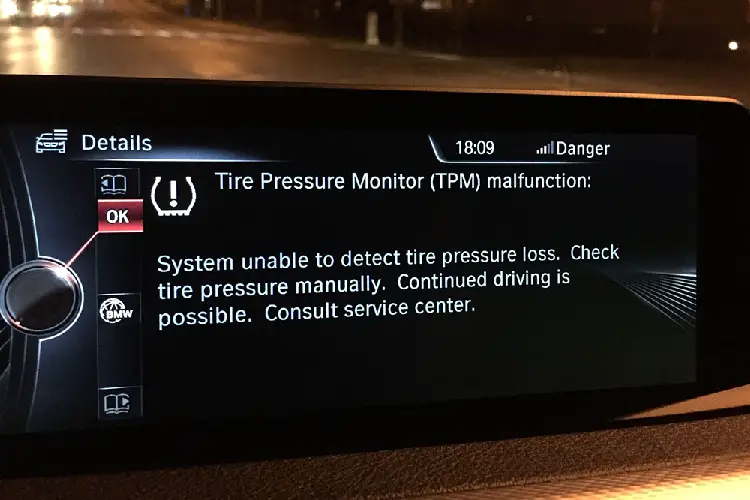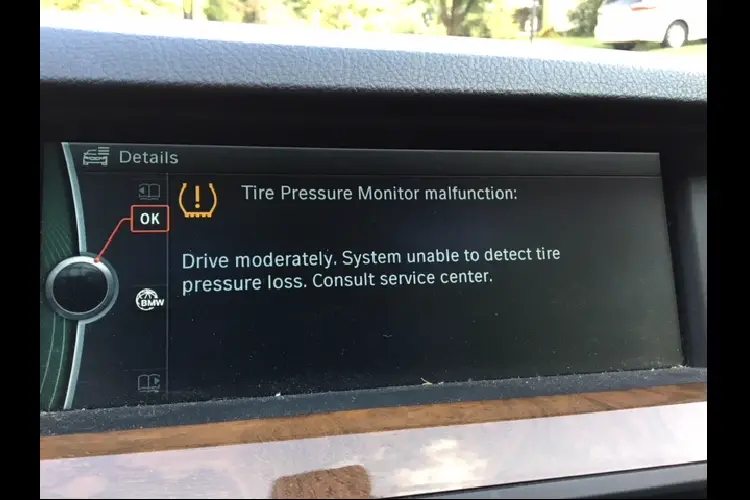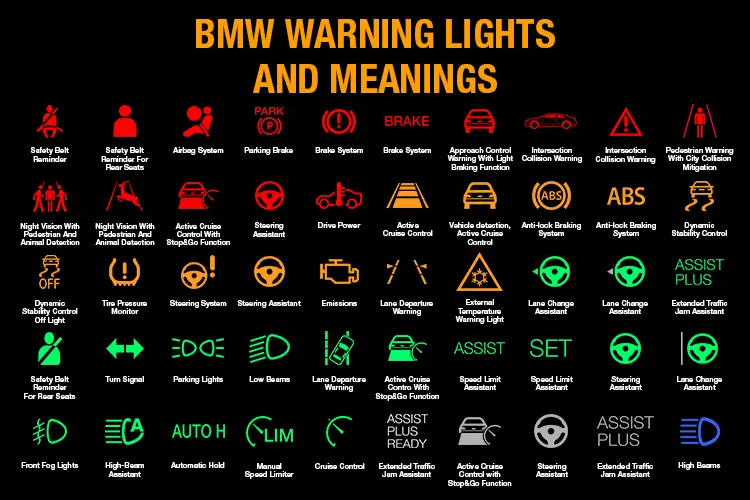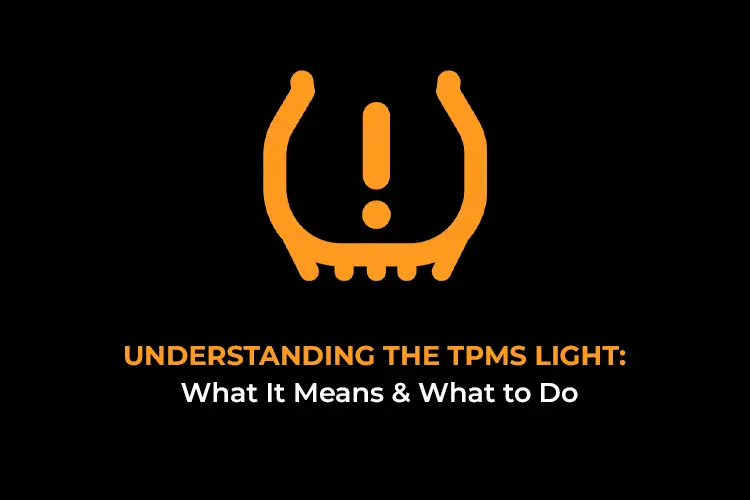Spotting the TPM Malfunction message flashing on your BMW’s display? And you’re wondering:
- What does the message mean?
- Why is it showing up?
- What’s my next move?
Don’t sweat it! I’m here to guide you through it all.
Within these lines, I’ll unravel its meaning, break down its reasons, and equip you with the know-how to tackle this message head-on.
Buckle up. Let’s jump right in!
What Is a TPM Malfunction on a BMW?

A Tire Pressure Monitoring (TPM) malfunction refers to an issue or problem with the Tire Pressure Monitoring System in a BMW vehicle.
The TPM system is a technology that monitors the air pressure in a vehicle’s tires and alerts the driver if the pressure falls below or rises above the recommended tire pressure.
You can locate the precise tire pressure recommendations for your BMW within the vehicle’s owner’s manual or on the label affixed to the door jamb. The recommended range for most BMW vehicles typically falls within the 30 to 35 PSI range.
The system will warn when the tire pressure drops significantly, around 20% or more below the recommended level. The message is typically accompanied by a tire pressure warning light on the dashboard.
When the TPM malfunction message appears, it’s important to take action to address the issue.
Now that you have explored the fundamentals of a TPM malfunction in a BMW.
Let’s delve into the underlying causes that can trigger this issue and the solutions to address them effectively.
Is It Safe to Drive with BMW TPM Malfunction Message?

No, driving with a BMW TPM malfunction warning is unsafe, as incorrect tire pressure can affect your vehicle’s handling, braking, and overall safety. Incorrect tire pressure can lead to decreased traction, reduced fuel efficiency, increased tire wear, and even the risk of a blowout.
It is recommended that you address the TPM malfunction as soon as possible.
What Causes BMW TPM Malfunction?
Solution: Check the tire pressure manually using a reliable tire pressure gauge and inflate/deflate the tires to the recommended levels.
Solution: Repair or replace it with trained technicians.
Solution: Ensure that there are no electronic devices or objects interfering with the TPM system’s signals.
Solution: Consult a professional technician to diagnose and replace the affected sensor’s battery.
How to Reset the BMW TPM Malfunction
Step 1: Check Tire Pressure
Check the air pressure in all of your vehicle’s tires using a tire pressure gauge. Ensure that each tire’s pressure matches the recommended values in your BMW’s owner’s manual or on a placard on the driver’s side door frame.
If the pressures are incorrect, adjust them as needed.
Step 2: Use the TPMS Tool to Test the TPMS Sensors
- Find the TPMS sensors on each tire. They’re usually on the valve stems.
- Activate the reading process on the TPMS tool.
- Read Sensor Data. The tool will display information like tire pressure and sensor IDs.
- Compare the displayed pressure readings with your vehicle’s recommended tire pressure.
Step 3: Address Issues
If a sensor reading is off, it might be a faulty sensor. Remove the old sensor and install the new one.
If you need help replacing the TPMS sensor, it’s best to seek assistance from a professional mechanic or a tire service center.
Step 4: Reset the TPM System
After adjusting or sensor replacement, you might need to reset the TPMS system using the vehicle’s controls or a TPMS tool.
Method 1: Using the iDrive System
- Turn on the ignition, but do not start the engine.
- Using the iDrive controller, navigate to the “Vehicle Info” or “Vehicle Status” menu.
- Choose the “Tire Pressure Monitor”.
- Select “Perform reset” or “Reinitialize”. Follow the on-screen prompts.
- Once the reset process is complete, turn off the ignition and then start the vehicle. The TPMS warning light should go off.
Method 2: Using the TPMS tool
After replacing a new TPMS sensor on your BMW, you should program or relearn the new TPMS sensor so the vehicle’s TPMS system can recognize it.
Here’s what you should do:
- Turn on the ignition (engine off).
- Connect the TPMS tool to the OBD-II port under the dashboard.
- Navigate through the tool’s menu to find the “Program Sensor” or “Relearn” option.
- Follow the on-screen instructions of the TPMS tool to initiate the programming or relearning process.
- The tool will communicate with the new sensor and integrate it into the TPMS system.
Note: The exact steps might vary based on the TPMS tool you have and the vehicle you’re working on. Always refer to the TPMS tool’s user manual and your vehicle’s owner’s manual for specific instructions.
What’s Next?
While TPM malfunction can be frustrating, understanding its meaning and causes empowers you to take the necessary steps for resolution.
Regular maintenance, prompt battery replacements, and professional assistance, when needed, will help ensure that the TPM system operates effectively, enhancing both the driving experience and overall vehicle performance.
As you tackle TPM malfunctions, don’t forget to keep a watchful eye on other dashboard symbols – they’re your BMW’s way of communicating its needs. Each symbol tells a unique story, so stay attentive, respond promptly, and ensure a harmonious driving experience.




Recommended for you
Subaru Tire Pressure Light: 5 Causes and How to Reset It
Auto PDC Malfunction on BMW: Causes and Fixes
Drivetrain Malfunction BMW: 6 Causes and How to Fix It